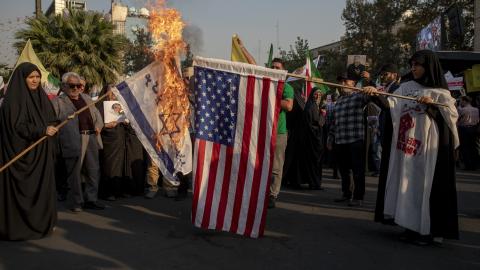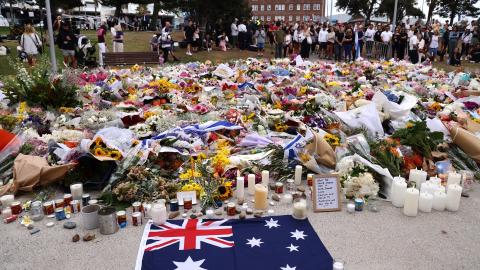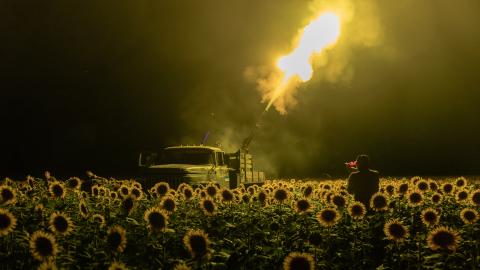Executive Summary
- Chinese nationals fight in Ukraine: Ukrainian President Volodymyr Zelenskyy announced that Chinese nationals are involved in the Russian offensive in Kharkiv.
- Battlefield assessment: The Russian military remained on the offensive and pounded Ukraine with Shahed drones and aeroballistic missiles.
- Ukraine’s deep-strike campaign: Ukraine struck a railway station in Rostov Oblast and a military airfield in occupied Crimea.
1. Battlefield Assessment
Fighting in Ukraine continued at a high operational tempo last week, with Russian forces making tactical gains. Pokrovsk and Lymansk remained flashpoints, while the Russian military pushed deeper in Toretsk, Novopavlivka, and Poltavka.
Russia has suffered over one million casualties since commencing its full-scale invasion. But defense intelligence from the United Kingdom has revealed that the rate of those casualties has been declining since March 2025. As the Ukrainian military suffers from severe manpower shortages and heavy losses in eastern Ukraine, the decline in Russian casualties is a worrying sign for Kyiv.
Last week Russia also continued to pound Ukraine from the skies. On August 4 the Russian military used Kinzhal aeroballistic missiles to hit hardened shelters at the Starokostiantyniv air base. The base hosts Ukraine’s F-16 aircraft and endured Russian strikes in 2024 when Kyiv first received its Western jets.
The Ukrainian Air Force reports that Russia continues to indiscriminately strike Ukrainian population centers. Russian forces are deploying strike packages of missiles and robotic warfare assets, with a conspicuous hike in Shahed drone usage in recent months. Open-source evidence suggests that Russia is now using anti-tank mines as warheads on its Lancet loitering munitions.
As first-person-view (FPV) drones blanket the battlespace, tactical combat units are focusing on new anti-drone training and weaponry. Many Russian and Ukrainian brigades and battalions have begun to equip their personnel with shotguns to protect against incoming aerial threats.
Kyiv also continued to conduct deep strikes against high-value targets inside Russia and occupied Ukraine. On August 4 drone teams from the Ukrainian Security Service (SBU) hit five Russian tactical military aviation platforms deployed in the Saki military airfield in occupied Crimea. The salvo damaged three Su-24 frontline bombers, reportedly destroyed one Su-30SM multirole combat aircraft, and hit a weapons storage facility in the area.
During the night of August 5, Ukrainian drones also targeted the Tatsinskaya railway station in Russia’s Rostov Oblast, sparking a fire in the compound and disrupting its operations. Russia uses the railway station, roughly 190 miles from Ukraine-held areas near Pokrovsk and 62 miles from the Russia-Ukraine border, to move grain and conduct logistics for nearby oil facilities.
2. Chinese Mercenary Presence in Occupied Ukraine
Ukrainian President Volodymyr Zelenskyy officially acknowledged that a large contingent of foreign troops, among them many Chinese nationals, is fighting alongside the Russian military in the Kharkiv sector. The Ukrainian press has reported that at least 163 Chinese fighters have served in Russian units since April 2025.
Ukrainian troops have uploaded several videos of captured Chinese mercenaries. While no regular Chinese military units have officially deployed to fight for Russia, evidence suggests that the Chinese government has done nothing to stop its citizens from joining the fight—and may have in some ways encouraged doing so. Most Chinese mercenaries learn about the war through a Russian advertising campaign on China’s Douyin social media platform. Evidence suggests that Douyin allows recruitment ads but blocks any uploads detailing Chinese casualties in the conflict. In an online ecosystem as tightly controlled as China’s, this discrepancy is no accident.
To date, Ukrainian counterespionage efforts have also documented how Chinese intelligence networks have infiltrated Ukraine, particularly its defense technological and industrial base (DTIB). While the extent of this penetration remains to be seen, Kyiv should work urgently to limit the possible damage.


















